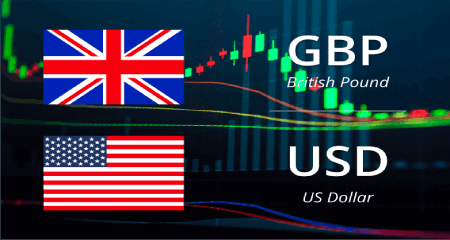
UK inflation underpinned the Sterling
The GBP/USD is trimming some of Tuesday’s losses after UK’s CPI showed signs of decelerating, while the US prices paid by producers for August ticked up, particularly in core PPI, in line with Tuesday’s CPI reading. During the day, the GBP/USD hit a daily low of 1.1479. but edged higher, following the UK’s report, sending the GBP/USD above the 1.1500 figure towards its daily high at around current exchange rates. At the time of writing, the GBP/USD is trading at 1.1565, above its opening price by 0.65%.
The US Department of Labor reported on Wednesday that August’s Producer Price Index (PPI) moderated, dropping 0.1% MoM, aligned with forecasts, while the annual reading edged lower by a full percentage point to 8.7% vs. 9.8% in the previous month. Regarding core PPI, every month rose by 0.4% but annually exceeded estimations, topping at around 7.3%. On the UK front, the Office for National Statistics (ONS) revealed that inflation ticked lower in August after breaking the 10% threshold, which was last seen in 40 years. Even though it’s good news for the Bank of England (BoE), it would not deter the central bank from increasing rates. Also, the appointment of a new Prime Minister in the figure of Liz Truss keeps market players at bay, waiting for its energy bill plan to kick in.
Analysts at ING wrote in a note that they expect the Bank of England (BoE) to raise rates by 50 bps next week, despite the environment not favoring the British pound. They added, “Slow growth and weaker equity markets should leave sterling as an underperformer.” An absent UK economic docket would keep traders leaning on US dollar dynamics. The US economic calendar will feature unemployment claims, the NY and Philly Fed Business Indices, alongside important Retail Sales figures. The GBP/USD daily chart depicts the pair recovering from weekly lows under the 1.1500 psychological level. A daily close above the September 12 low at 1.1600 would pave the way towards the 1.1700 figure, but a tranche of US economic data, ahead of the FOMC’s meeting, might refrain traders from opening fresh bets vs. the greenback. On the downside, a break below 1.1500 will re-expose the YTD low at 1.1404.
Analysts at ING wrote in a note that they expect the Bank of England (BoE) to raise rates by 50 bps next week, despite the environment not favoring the British pound. They added, “Slow growth and weaker equity markets should leave sterling as an underperformer.” An absent UK economic docket would keep traders leaning on US dollar dynamics. The US economic calendar will feature unemployment claims, the NY and Philly Fed Business Indices, alongside important Retail Sales figures. The GBP/USD daily chart depicts the pair recovering from weekly lows under the 1.1500 psychological level. A daily close above the September 12 low at 1.1600 would pave the way towards the 1.1700 figure, but a tranche of US economic data, ahead of the FOMC’s meeting, might refrain traders from opening fresh bets vs. the greenback. On the downside, a break below 1.1500 will re-expose the YTD low at 1.1404.
